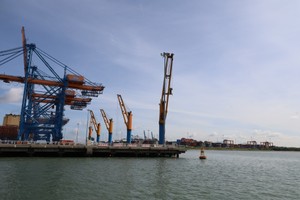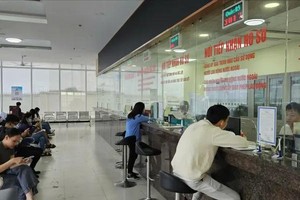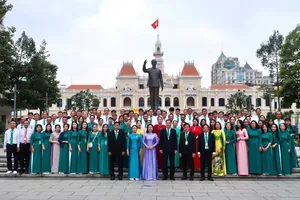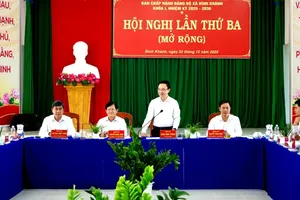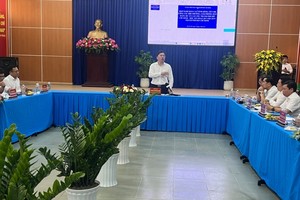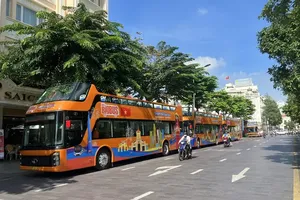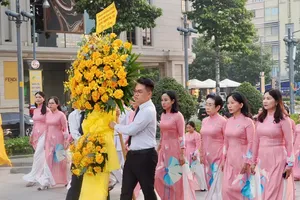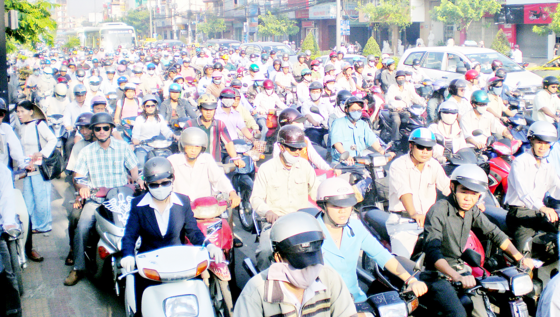
At a meeting in August, chairman of the city People’s Committee Nguyen Thanh Phong assigned HIDS to submit a project on the feasible solutions in September. The requirement was repeated at a socio economic meeting in the first eight months this year on September 5.
In fact, rotational shiftwork has been applied since 2001. In October 2007, the city People’s Committee put this measure into an urgent project to reduce traffic jam and accidents. However the project was not approved by the city People’s Council so the committee has just implemented it in some localities, areas and streets.
The Department of Education and Training has applied rotating class times for primary, secondary and high schools with the deviation of 15 minutes among educational stages.
In addition, the education industry has required schools in the same area to work together to rotate their class times to reduce traffic jam. This solution has proved to be effective as traffic jam in front of schools have reduced.
Ho Chi Minh City Export Processing and Industrial Zone Authority (Hepza) said that most businesses have organized their shifts according to administrative hours. So traffic congestion has regularly occurred 30 minutes before and after working hour starts and ends.
The situation is found better at businesses organizing three shifts a day. Since 2011, Hepza has changed working time and arranged rotational shiftwork for businesses in 16 industrial and export processing zones. However, implementation has met with difficulties as it affect workers’ daily activities including time to pick up and drop off their children for schools as well as production activities of businesses, says Hepza’s representative.
Hour change in government agencies
At present, relevant agencies have proposed some rotating shiftwork measures. The first one is to keep school time unchanged and change working hour of Government agencies. All level people’s committee, agencies, social and political organizations will work in two shifts in one spell which are 30 minutes apart from each other.
Break time will reduce to 60 minutes from 90 minutes as present. In the morning, the first shift will be from 7 a.m. to 11h30 a.m. while the second will be from 7:30 a.m. to 11:30 p.m.
In the afternoon, the first shift will start from 12:30p.m. and last until 4p.m. and the second shift will start from 12:30 p.m. to 4:30 p.m. The change is estimated to impact officials, civil servants and workers but the influence level will not be high.
At present, nearly 122,000 people are working in government agencies and public service organizations. The above working hour change will reduce 30-60 percent of private vehicles, about 36,600-73,200, in streets during peak hours.
Despite changing working hours, agencies still ensure that they will serve residents and businesses from 7 a.m. to 4:30 p.m. This solution brings higher economic efficiency compared to damage caused by traffic jam, said HIDS representative.
Another solution is that people’s committees, agencies, armed forces and schools in the city will rearrange working and study hours.
They will work and study from 8 a.m.- 12p.m. and 1:30 p.m.- 5:30 p.m. on Monday and Friday; from 7:30 a.m. - 11:30 a.m. and 1 p.m. - 5p.m. on Tuesday, Wednesday and Thursday.
That will help reduce traffic jam on Monday and Friday when traffic jam is regularly long lasting because many residents leave HCMC for their hometowns or return to the city.
However, it will be difficult for residents to pick up and drop off children on Monday and Friday. So relevant agencies should get feedbacks from parents and teachers about this solution.
The above proposals are being improved before submitted to the city People’s Committee for approval.
